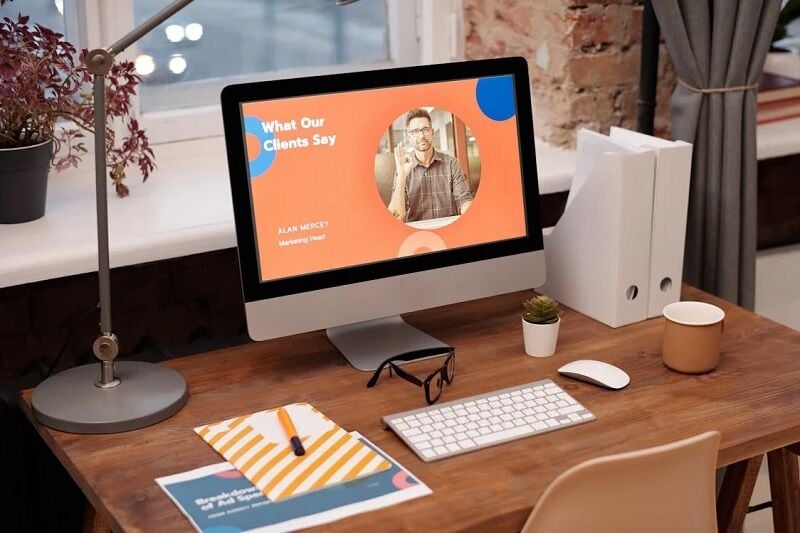Tips to customise your advertising banners to get clicks

In the realm of digital marketing, clickthrough rate transcends buzzword status. It’s an essential metric that measures the efficacy of your display advertising. For those keen on elevating their CTR, this is the perfect resource. This article will focus on optimising your advertisements across diverse channels and audiences, wrapping up a novel perspective on innovative ad design.
Considering the daily serving of billions of impressions, it’s understandable if your ads get overshadowed. However, there’s no need to worry. This guide will delve into methods to ensure your ads are not just viewed but actively pursued by clicks, facilitating an influx of website traffic and bolstering brand recognition.
Grasping the concept of banner ads
As part of your digital marketing strategy, understanding the intricacies of advertising banners forms an essential aspect. From design to placement, every minute detail contributes to the success or failure of these banners. These elements aren’t just about aesthetics; they serve a concrete purpose in attracting your target demographic and motivating them to engage by clicking on the ad.
Importance of design and placement
With precise positioning and attractive design, an advertising banner can significantly influence the clickthrough rate (CTR). A well-placed ad catches the eye more effortlessly, making your message more likely to be read. Remember, banner ads aren’t just about making an impression, they are about prompting action clicks.
Depending on the characteristics and online habits of your target audience, choose locations that can best showcase your banners. Google’s Display Network, for instance, lets you find sites based on specific keywords or related data, enhancing the likelihood of your banners being clicked.
The role of visuals and text
The effect of compelling visuals coupled with persuasive text can’t be understated in advertising banners. Visuals capture attention, engage, and prime the viewer for the message. While images can convey emotions and set a tone, it’s the ad copy that delivers your key marketing messages.
Craft your text and visuals to be in harmony, both working to represent your brand personality and evoke the desired actions from your viewers. In terms of customisation, tailor your visuals and text to align with your brand, marketing goals and target audience. This does not just refer to images and typography, but also to colours, shapes, lines, and the overall layout.
Remember, a competent advertising banner is not merely about looking aesthetically pleasing but about achieving tangible results in the form of clicks.
Design tips for effective banner ads

Mastering banner ad design is paramount in boosting your overall online advertising success. The customisation of your advertising banners taps into your audience’s preferential inclinations. The blend of the right size, optimal design aesthetics, and highly legible text can vastly improve your CTRs.
Choosing the right size and format
Understanding different banner sizes is critical. Among them are leaderboards (728 x 90px), Half pages (300 x 600px), Medium Rectangle (300 x 250px), and Large rectangles (336 x 280px). Choosing, therefore, is not about one size fits all. It’s about understanding where the display ad will be placed, the kind of attention it draws, and how it scales across different devices. It’s essential to provide multiple formats for different platforms and devices.
Core principles of banner aesthetics
Strive for a balance between captivating design and your marketing message. The banner aesthetic should not only be appealing but also resonate with your brand and the product being advertised. Your banner ad’s visual potency is critical in making that first impression, drawing the viewer’s attention, and stimulating their curiosity. Blend visual elements such as colours, imagery, and typography to create a well-balanced and eye-catching banner.
Text visibility and readability
Your text needs to be clear, readable, and straight to the point. Avoid intricate fonts that may hinder readability. The choice and size of the font need to reflect the hierarchy of information in your banner ad. The use of personal pronouns in your Call to Action (CTA) can increase conversion rates by up to 202%. Consider phrases like Get my discount as opposed to more informal alternatives. Remember, your ultimate goal is to spark interest and invite your audience to take a specified action.
Strategic elements of banner ads

Delving into the core of tactical banner ad creation, let’s shed light on the role of colour schemes, and brand consistency that can make your ads stand out and get more clicks.
Colour scheme and brand consistency
Grasping the significance of brand consistency is the first step towards designing successful advertising banners. Integrate your brand’s colour palette into your advertising banners. It’s an element of brand consistency that resonates with the target audience, fostering recognition and trust. For instance, if you’re crafting banner ads specific to Thailand’s market, consider the local culture and popular colour trends before finalising your design. Yet, maintain harmony with your brand’s identity and accentuate this with appropriate customisation.
Compelling Call-to-Action (CTA)
It’s imperative to have a compelling CTA in your ad banners. Avoid generic phrases such as click here or buy now. Instead, it directly relates to the marketing proposition, creating urgency and inducing an immediate response. Examples can be, Avail your exclusive discount code; unlock 50% off today, or experience fast delivery now. Not only does it encourage more clicks but it also synergises your marketing efforts, yielding a boost in the overall performance of your advertising banners.
Implementation and testing

Transitioning from the creative and strategic aspects of crafting advertising banners, let’s delve into their practical implementation and testing phases. Your efforts in customisation and design need to be coupled with suitable placement and rigorous performance testing.
Placing Ads for maximum engagement
Placement can dramatically affect the interaction levels of your advertising banners. Consider locations that naturally draw the viewer’s attention. Position ads on the top of the webpage or right in the middle of the content stream. Also, take note of cultural preferences. For instance, viewers in Thailand may respond differently to ad placements than those in other countries. Always remember, the goal is to ensure your ads are not overlooked but engage seamlessly with the viewer’s browsing habits.
A/B Testing for performance optimisation
Even with the best strategies and designs, there remains a certain level of unpredictability attached to marketing results. Hence, rely on A/B testing to pinpoint the most effective version of your banner ad. It involves creating two versions of the same ad, differing in one key aspect, such as the call-to-action phrase or image used. Observe and analyse the clickthrough rates of both versions to decide which resonates more with your audience. This way, you’ll directly gauge user preferences and boost engagement effectively.
Remember, continual testing and refinement is the way to ensure your advertising banners consistently attract clicks and perform optimally.
You can also check out the role of SEO in B2B and B2C marketing strategies, Nowadays, the spotlight is firmly on the critical role of search engine optimization (SEO) in shaping the success of businesses, both in the B2B (business-to-business) and B2C (business-to-consumer) domains. SEO is the secret sauce that makes your online presence stand out amidst the digital noise.
Latest Thailand News
Follow The Thaiger on Google News:


























